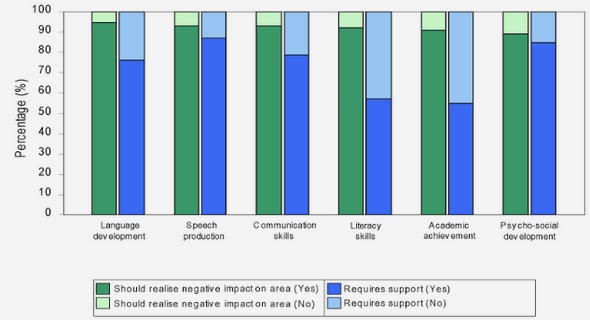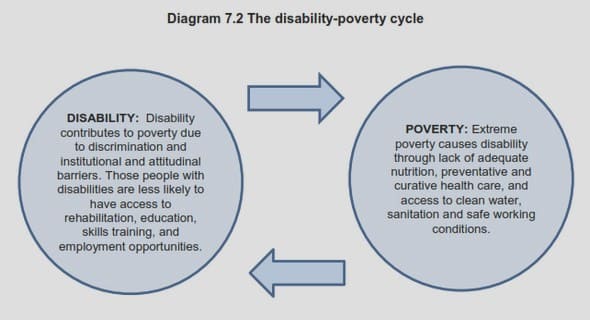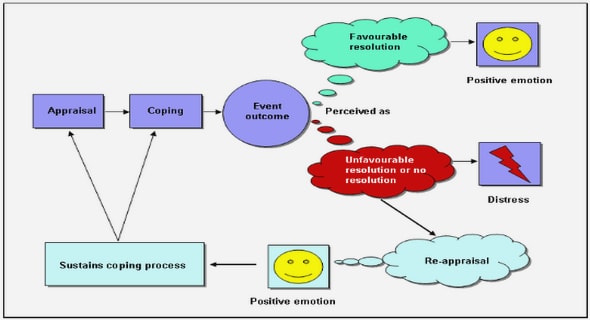Get Complete Project Material File(s) Now! »
Prepubertal calf ovarian morphology
In the youngest female calf, examined at 2 months of age, ovarian weight (13.1 and 13.4 g) and volume was dramatically lower than those of late fetal life (Figure 6.1), predominantly because of a significant reduction in the volume of interstitial cells and the organisation of extravasated blood (Figure 6.6b). The cortical tissue appeared denser than in fetal life, contained many fewer blood vessels and ranged from 450 to 1000 μm in depth (Figure 6.7a). The distinctly fewer and smaller (2 x 2 mm) antral follicles along the cortico-medullary border occupied <2% of the ovarian volume. By two months after birth the islands of interstitial tissue which, along with blood vessels and remnants of atretic follicles occurred throughout the medulla, were smaller than those observed during late fetal life and occupied only 14 cm3 per animal compared to 93 cm3 in a 20-month old fetus. Furthermore, more stromal cells were observed among the interstitial cells than was the case in younger animals. At 4.5 years of age interstitial tissue had reduced to 3% of ovarian volume (Figure 6.2). Cortical depth varied from 2 to 3 mm and became further extended by the presence of antral follicles.
Immunohistochemical staining of interstitial cells
The whorls of interstitial cells in the fetal ovary stained with increasing intensity (Figure 6.8a) during the second half of gestation for 3β-hydroxysteroid dehydrogenase (3β–HSD), the steroidogenic enzyme necessary to convert pregnenelone to progesterone and other progestagens, as described previously by Allen et al. (2002).
Initially, from around 11 months of gestation the cytoplasm of the 3β–HSD positive cells stained evenly and diffusely but, again as gestation advanced, groups of interstitial cells were observed in which the staining pattern within the cytoplasm became very intense and granular (Figure 6.8b). The thecal cells of the growing preantral and antral follicles (from about 400 μm in diameter) also stained positively but less intensely. Of great interest was the finding that the interstitial cells continued to stain strongly for 3β–HSD activity after birth (Figure 6.8c). The incidence and intensity of staining declined steadily during the first 2 years of postnatal life although there were still small patches of 3β–HSD positive interstitial cells visible at 2.5 years of age (Figure 6.8d). Of interest also was the 3β–HSD positive staining of the cytoplasm of the granulosa cells surrounding the small follicles (Figure 6.8e) which began around 16 months of gestation. Prior to this only the oocyte cytoplasm had stained lightly. This cyctoplasmic staining of the granulosa cells continued in the SF present in the cortex, and those in the medulla, during fetal life and up to at least 5 years after birth. With progression to the secondary stage of follicle development and onward, the granulosa cells no longer stained positively.
Follicle number
Figure 6.9 shows the numbers of SF per elephant for fetuses and calves of different ages. No TPM follicles were seen. EP follicles (SF with a single layer of granulosa cells, of which most are flat and few cuboidal) were abundant and constituted between 63 and 99% of all SF. TP follicles (SF with a single layer of cuboidal granulosa cells) were less abundant; the maximum observed was 419 717 per animal (Figure 6.9). The number of EP follicles as well as the total number of SF depend on age (P = 0.01), being highest in fetal life and in Group 3 (Table 6.1), whereas the number of TP follicles tends to remain more constant (P = 0.06) but increases with age as a percentage of total SF. Without including outliers the numbers of TP as a percentage of SF were: Group 0 ≤2.6%, Group 1 ≤5%, Group 2 ≤12%, Group 3 ≤16%. The number of TP was lower in calves aged 2.5– 4.5 years than in calves aged 4.5 years or older (Table 6.1). Cortical volume increased with age in prepubertal calves (Figure 6.10).
Chapter 1. General Introduction
1.1. Classification of elephants
1.2. A brief overview of studies related to reproductive processes in the elephant
1.3. The gross and microscopic anatomy and physiological functions of the elephant ovary and its follicles.
1.3.1. Research pertaining to fetal, neonatal and prepubertal ovaries
1.3.2. Ovarian structures during different phases of the reproductive cycle of adult elephants
1.4. Further anatomy and physiology of the elephant
1.4.1. Anatomy of the female reproductive system
1.4.2. Puberty
1.4.3. Fertility.
1.4.4. Fetal size
1.4.5. Placentation
1.4.6. Lactation
1.4.7. Ovarian ageing in elephants
1.4.8. Elephant age classification
1.5. Follicle development in mammals.
1.5.1. Origin of the ovarian reserve
1.5.2. The ovarian reserve and follicle activation
1.5.3. Continued follicle growth to pre-ovulatory size
1.5.4. Follicle classification
1.5.5. Small follicles in elephant ovaries
1.6. Background to the over-abundance of elephants in Zimbabwe
1.6.1. Elephant numbers in Zimbabwe
1.6.2. Attempts to counteract over-abundance
1.7. Objectives of the study
Chapter 2. Materials and methods
2.1. Source of specimens
2.2. Collection of specimens
2.2.1. Ovary and lower jaw collection
2.2.2. Body measurements
2.2.3. Further data collection
2.3. Estimating the age of elephants
2.4. Histology and stereology
2.4.1. Establishment of the protocol
2.4.2. Histology.
2.4.3. Stereological examination
2.4.4. Sampling and bias
Chapter 3. Follicle morphology in the ovary of the African elephant and the composition of the ovarian reserve
3.1. Introduction
3.2. Materials and methods
3.2.1. Statistical Analysis
3.3. Results
3.4. Discussion
3.4.1. Follicle classification
3.4.2. The ovarian reserve
3.5. Conclusions
Chapter 4. The distribution of small preantral follicles within the ovaries of prepubertal African elephants (Loxodonta africana)
4.1. Introduction.
4.2. Materials and methods
4.2.1. Specimens and stereology.
4.2.2. Statistical analyses .
4.3. Results
4.4. Discussion
Chapter 5. Development of the germinal ridge and ovary in the African elephant (Loxodonta africana)
5.1. Introduction
5.2. Materials and methods
5.3. Results.
5.4. Discussion.
Chapter 6. Growth and development of the ovary and small follicle pool from mid fetal life to pre-puberty in the African elephant (Loxodonta africana) .
Chapter 7. The progression of small follicle reserves in wild African elephants (Loxodonta Africana) from puberty to reproductive senescence
Chapter 8. General Discussion
Chapter 9. References
GET THE COMPLETE PROJECT
Ontogeny of the ovarian follicular reserve of the African elephant (Loxodonta africana)


